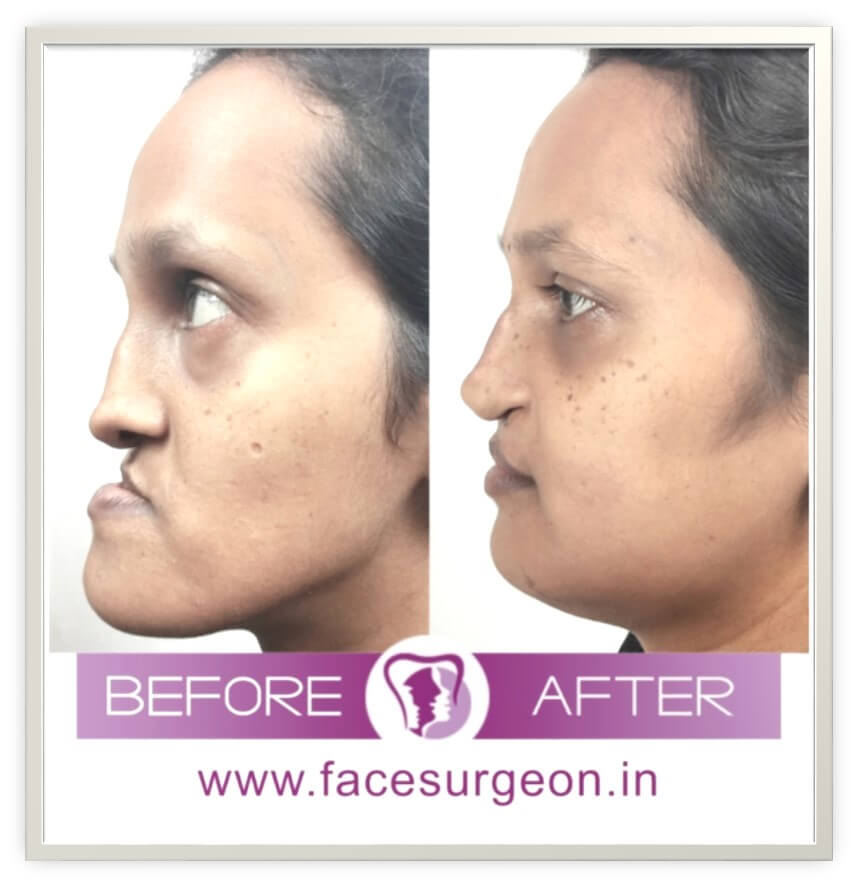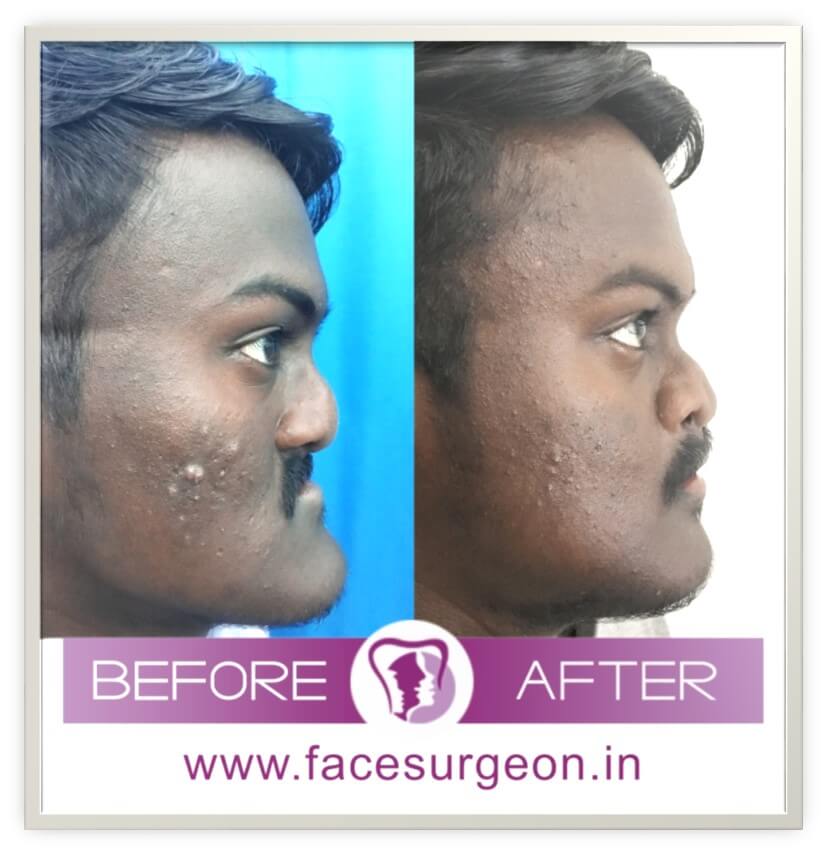What is Orthognathic Surgery or Jaw Surgery?
Orthognathic surgery simply means a surgical procedure carried out when the jaw of a patient fails to meet correctly and/or the teeth do not seem to find common ground to fit align correctly with the jaws. While orthodontics focuses on straightening the teeth, orthognathic surgery helps to reposition the misaligned jaws. This surgical procedure doesn’t only improve facial appearance. It also ensures the straightening of the teeth to align correctly while not jeopardizing the proper functioning of the teeth.
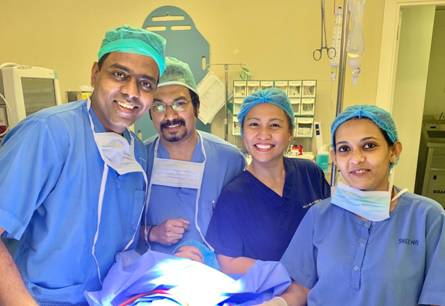
Corrective jaw surgery or orthognathic surgery is an excellent surgical procedure that makes a patient healthier. Apart from that, it improves the overall appearance of the jaw exterior. When it comes to determining whether a patient needs a corrective jaw surgery or not, there are several symptoms to observe. Some of these include difficulty with chewing, chronic jaw pain, difficulty in swallowing food.
All these symptoms are threats that result in a wide range of health issues, including headaches and consistent mouth breathing, which also results in sleep apnea. Other problems include the wrong alignment between the upper and lower sets of teeth, especially during mouth closure, as well as difficulty closing lips without strain or pains. All these symptoms must be noticed in order to determine whether you need corrective jaw surgery or not.
Upper and Lower Orthognathic Surgery: The Clear Difference
Upper and lower jaw surgeries vary considerably based on the individual patient. A corrective jaw surgery carried out on the lower jaw simply implies involves the separation of the jaw’s frontal part from the srear part. This is usually done in the sagittal plane, otherwise known as a bilateral sagittal split osteotomy. The reason why there lies a gap between the rear and the frontal part of the lower jaw is due to the sliding on the bones on top of each other.
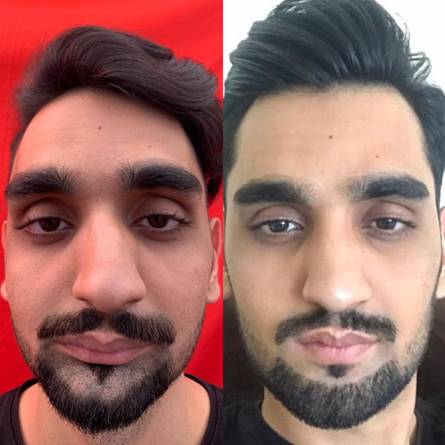
The primary role of the frontal part of the lower jaw is to enhance support, promoting movement in the lower portion of the jaw forwards and backward. Strengthening the movement of the frontal part helps to reposition the tooth-bearing area. At Richardson Dental and Craniofacial Hospital in India, our expert surgeons insert screws and surgical plates to help reposition the bone segments.
The orthognathic surgery on the upper jaw is slightly different from the lower jaw corrective surgery. This is because the surgical procedure is carried out to separate the tooth-bearing area of the jaw. This will allow the smooth movement of the base up, down, forward, and backward. With that, the jawbones will be able to accurately move to the exact position as desired by the individual patients. Unlike in the lower jaw corrective surgery, the surgeon makes use of surgical plates and screws to fasten the jaw to the new position.

In some cases, some patients may need the addition or removal of bones from the jaw. Other patients might also need reinstatement of the jaw. In the upper jaw corrective surgery, the recovery procedures may require a bite guide. So, the bite alignment remains in place during the recovery stage.
How Do You Prepare for Orthognathic Surgery?
One of the first preparatory steps for orthognathic surgery is to determine whether you are the right candidate for the procedure. If so, you should visit a skilled, licensed, and board-certified surgeon at Richardson Dental and Craniofacial Hospital in India. At our hospital in India, we’ll work with you towards choosing a qualified orthodontist to help kick start the pre-surgical orthodontic treatment.
With Dr. Sunil Richardson, you’ll discuss the different types, options, duration, and orthodontic treatment costs. We carry out a wide range of Invisalign related cases in our hospital in India. We will then discuss your case with our competent orthognathic surgeon and plan the surgery. At this point, we’ll carry out tests to determine whether you’ll need to eliminate the wisdom teeth of the bicuspids. Of course, we’ll carry you along with every key detail of the surgical procedure.
The next phase of the orthognathic surgery involves the pre-surgical orthodontic treatment. Usually, this extends between the duration of 6-24 months, and it solely depends on the specific cases. Orthodontic treatment is the first step of the entire process as it helps to straighten the teeth in preparation for orthognathic surgery. It is highly essential to keep proper measures to align the patient’s bite before the repositioning of the jaw.
At Richardson Dental and Craniofacial Hospital in India, once we confirm that the teeth are aligned and back in place, we will then carry out the orthognathic or jaw corrective surgery. This surgery is conducted at our hospital located in Nagercoil, India. Prior to the surgery, we usually administer general anesthesia to our patients. The duration of the orthognathic surgery typically varies depending on the surgery being conducted and the jaw misalignment complexity. After the surgery, there is a post-surgical procedure which takes place between 4-6 months.
Usually, jaw corrective surgery is not carried out on children. The surgical procedure is only appropriate for patients that have stopped growing teeth, and the jaws and skeletal features are fully developed. Typically, females stop growing teeth at age 15 while males stop growing teeth at 18. Certain circumstances, such as birth conditions or severe orthodontic problems, may require surgery at an earlier age.
Why is Orthognathic Surgery Performed?
Candidates for orthognathic surgery include patients with improper bites, sleep apnea, and individuals with imbalanced facial appearances. Apart from that, individuals with wrong jaw positions are also patients for jaw correction surgery. As individuals continue to grow higher, the jaws begin to form and position themselves.
The rate of growth and positioning of jaws varies from an individual to another. And in some cases, both upper and lower jaws grow differently. This difference in growth rates can result in a series of problems resulting from normal functioning, speech coordination, and chewing problems. The jaw may also produce some imbalances in facial appearances, which may negatively influence the patient’s appearance. Another factor affecting the jaw misalignment is congenital disabilities, which may require corrective surgery as a remedy.
What Conditions Can Influence The Need for Orthognathic Surgery?
The history of orthodontics treatment is the first thing to examine when it comes to factors that influence a patient’s need for orthognathic surgery. Usually, orthodontists across the world mask skeletal issues by putting in appropriate measures to correct the bites. This is considered appropriate in cases of mild dentofacial defects. In moderate and advanced cases, the patients continue to grow until they finally realize that something is off with their profile.
Here are the categories of patients that we attend to in our Dental and Craniofacial Hospital in India
- Patients with birth defects
- Involuntary mouth breathing
- Trauma or jaw or facial injury
- Sleep apnea
- Receding lower jaw or chin
- Tumor of pathology affecting the jaw
- The inability of proper alignment of lips without pain or strain
- Chronic jaw or jaw joint pain
- Protruding jaw
- Open bite
These systems can form in diverse ways. While some patients notice at birth, they can also be acquired after birth due to hereditary or environmental factors. Before we diagnose any treatment plan, Dr. Sunil Richardson entertains a consultation for an X-ray to examine the severity of the case.
During the pre-treatment consultation, we implore that you should feel free to ask questions regarding your treatment. Once you have been diagnosed and the surgeon has proffered a solution to your problem, you can discuss it with Dr. Sunil Richardson to proceed with the treatment plans.
What is Your Likely Expectation During Orthognathic Surgery?
Usually, orthognathic surgery occurs in our hospital facility at Richardson Dental and Craniofacial Hospital in India under general anesthesia administered by Dr. Sunil Richardson. The surgical procedure is usually done inside the mouth. This helps to prevent the formation of scars on the exterior parts of the face.
Of course, orthognathic surgery involves cutting through the jawbones. It provides an opportunity for our surgeon to properly position the jaw in the appropriate place to eliminate the current difficulty experienced by the patient.
When it comes to repositioning and proper alignment of the jaw, screws, and plates are required to secure the jawbone in the appropriate position. In some scenarios, the surgeon may need to add or remove a bone. With titanium screws and plates, the bone and new jaw position will be positioned temporarily.
As we’ve said earlier, the duration of orthognathic surgery solely depends on the type and complexity of the case. Dr. Sunil Richardson is the best Dental and Craniofacial surgeon in India and will complete all the surgical procedures with his team members.
At Richardson Dental and Craniofacial Hospital, we always prepare our patients’ minds by letting them know that the first few weeks will be uncomfortable. Surprisingly, this procedure is not painful. However, the swelling and clotting of blood in the sinuses can make the patient feel uncomfortable. From experiences, the patients always improve in about 20-30% in the second week, 70-80% in the third week. Once a patient has been able to survive the third week, the public won’t even notice that any procedure has been carried out on the patient.

During the first week, you should be calm as there will be lots of swellings around the cheeks, nose, and lower jaw. Of course, some bruises are healthy, and they vary from one patient to another. Dr. Sunil Richardson doesn’t wire the teeth shut after orthognathic surgery at Richardson Dental and Craniofacial Hospital in India. This can be attributed to the modern-day advancement in hardware.
What are the Potential Adverse Effects of Orthognathic Surgery?
After corrective jaw surgery, you may experience a wide range of adverse effects. It includes discomfort, swellings, infection, and bleeding. Other potential side effects include nausea and vomiting. Dr. Sunil Richardson is a chosen specialist to speak with on your orthognathic surgery at Richardson Dental and Craniofacial Hospital in India.
Follow Up and Recovery Procedures for Orthognathic Surgery
After surgery, patients are usually scheduled to visit our hospital for follow-ups after the first 10 days. This is where radiographers come into play. Based on each patient’s case, Dr. Sunil Richardson attends to every patient 3-4 times during the first month after the surgery. This stops until he feels comfortable and convinced enough to transfer the patient for post-surgical orthodontic treatment.
Diets
For the first 6 weeks post-surgery, patients are advised to adhere strictly to liquid intake. Then, you can gradually consume soft diets for the second 6 weeks post-surgery. After the end of the 12 weeks, patients can then return to their normal dietary lifestyle.
Physical Activities
Typically, it takes an average of 5-6 months for bones to heal completely after surgery. During this period, you will be advised to reduce your contact with the public. In the first week, you can restrict your movement to the house environment only. You’ll experience lightheadedness. It takes a few days for your body to replenish the lost blood during the surgical procedure.
More so, you can keep your head elevated 30 degrees during these periods. If you want to be more comfortable, you can ice your face periodically. Limit your movement to 1 mile during the second and third-week post-surgery.
Meet Dr. Sunil Richardson
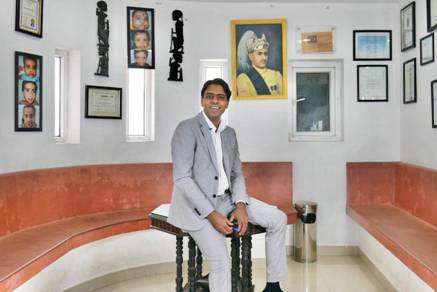
Dr. Sunil Richardson is a licensed and board-certified oral and maxillofacial surgeon, practices a broad range of oral and maxillofacial surgery with expertise in dental implants, hair transplants, orthodontic treatment, orthognathic/jaw corrective surgery and many more. He doesn’t only provide the best possible medical care to patients but also helps them achieve a sensitive understanding of their aesthetic goals.
Get in Touch With Us Now! Visit our website at Facesurgeon.in.

